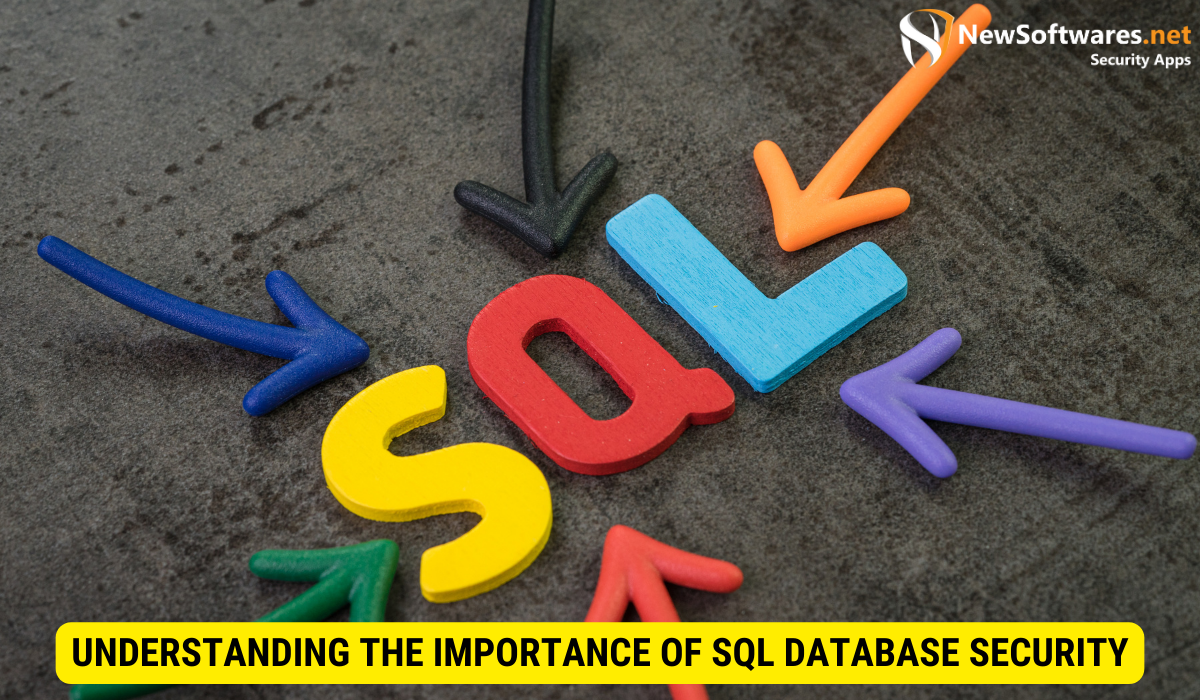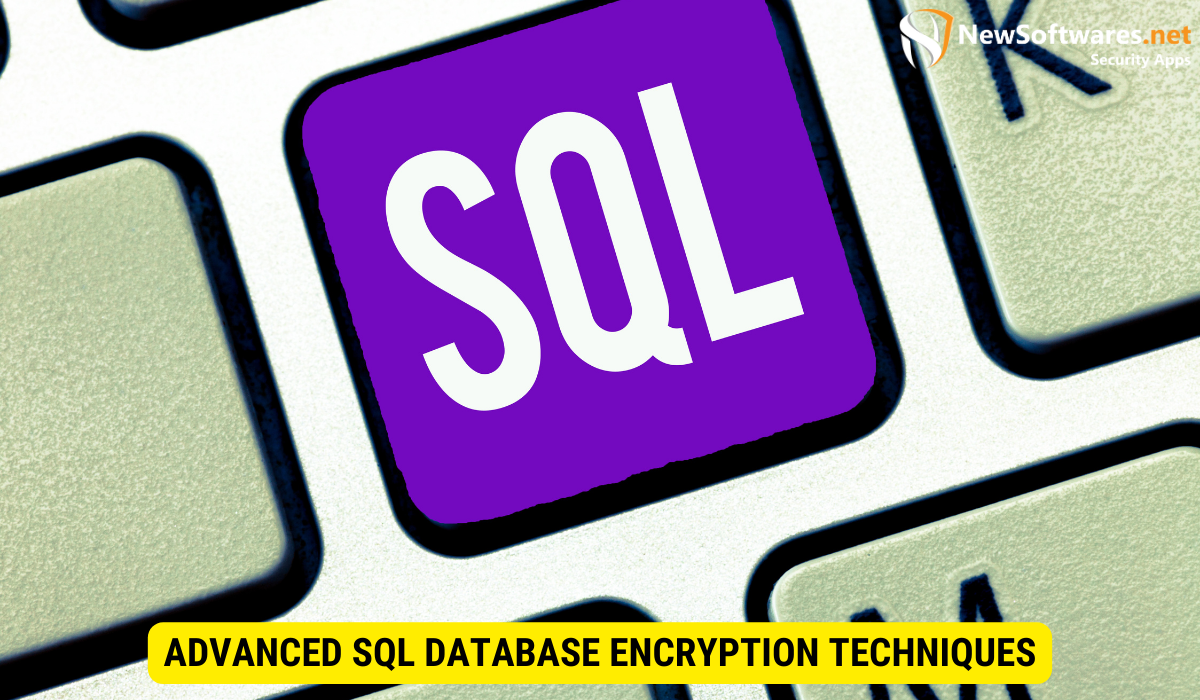Data encryption is vital for SQL database security as it ensures confidentiality and integrity. It converts data into an unreadable format, protecting it from unauthorized access and maintaining its integrity.
In today’s digital age, securing sensitive data is paramount for organizations. With the increasing number of cyber threats and sophisticated hackers, taking the necessary measures to protect your SQL database is essential. One of the most effective ways to ensure the security of your data is through encryption. This comprehensive guide will provide you with an in-depth understanding of SQL database security, and the role data encryption plays in it. We will also discuss the fundamentals of SQL database encryption, steps to implement encryption in your database, and advanced techniques to enhance your database security.
Understanding the Importance of SQL Database Security
.
SQL database security is crucial for your data’s integrity and your organization’s reputation. Any compromise in the security of your database can lead to data breaches, economic loss, and legal implications. Understanding the significance of SQL database security and the potential risks associated with neglecting it is essential.
When it comes to the security of your SQL database, there are various factors to consider. One of the key components is data encryption. Data encryption involves converting plain-text data into a coded form that can only be accessed with the right decryption key. It plays a vital role in shielding sensitive information from illegal access and ensures the confidentiality and integrity of your data.
The Role of Data Encryption in Database Security
Data encryption acts as a shield for your SQL database, providing additional protection against potential threats. Encrypting your data makes it significantly more challenging for unauthorized individuals to access and misuse it.
When data is encrypted, it is transformed into an unreadable format. Even if someone manages to gain illegal access to your database, they cannot make sense of the encrypted data without the decryption key. This makes sure that the sensitive information remains secure even if a breach occurs.
Moreover, data encryption helps maintain the integrity of your data. It ensures that the information stored in your SQL database remains unchanged and uncorrupted. Any illegal modifications or alterations to the encrypted data will render it useless without the decryption key, making it easier to detect and mitigate potential tampering attempts.
Risks of Neglecting SQL Database Security
Ignoring SQL database security can have severe consequences for your organization. The risks associated with neglecting database security can be catastrophic, leading to financial loss, damaged reputation, and legal implications.
One of the significant risks of neglecting SQL database security is the potential for data breaches. A data breach can expose sensitive information, for instance customer data, financial records, or intellectual property, to unauthorized individuals. This can result in financial loss due to legal penalties, loss of customer trust, and potential lawsuits.
Additionally, neglecting SQL database security can lead to unauthorized access and misuse of your data. This can result in data manipulation, theft, or even complete loss of critical information. The impact of such incidents can be shocking, affecting not only your organization but also your customers and business partners.
Furthermore, neglecting database security can damage your organization’s status. News of a data breach or security incident can spread quickly, causing a loss of trust and credibility among your stakeholders. Rebuilding a flawed reputation can be challenging and time-consuming, potentially impacting your business’s growth and success.
Implementing strong security measures is of greatest importance to mitigate these risks. Investing in SQL database security protects your data, maintains customer trust, and safeguards your organization’s reputation.
Fundamentals of SQL Database Encryption
Before delving into the implementation of encryption in your SQL database, it is essential to understand the fundamentals of data encryption. This section will provide a comprehensive overview of data encryption and the common types of encryption algorithms.
Data encryption is converting plain-text data into an unreadable format to save from unauthorized access. Encryption ensures that even if the data is intercepted, it remains meaningless to anyone without the decryption key. This section will delve into the intricacies of data encryption and its significance in database security.
When it comes to data encryption, various types of encryption techniques are available, each with its strengths and weaknesses. This section will discuss the types of encryption algorithms commonly used in SQL database security, such as symmetric key encryption, asymmetric key encryption, and hashing algorithms.
Symmetric key encryption is a type where the same key is used for both the encryption and decryption processes. This method is relatively fast and competent, making it suitable for encrypting large amounts of data. However, the challenge with symmetric key encryption lies in securely distributing and managing the encryption key.
On the other hand, asymmetric key encryption uses a pair of keys, for example a public key for encryption & a private key for decryption. This method provides a advanced level of security as the private key is kept secret, while the public key can be freely shared. Asymmetric key encryption is commonly used for secure communication and key exchange between parties.
In addition to encryption, hashing algorithms play a crucial role in data security. Hashing algorithms convert data into a fixed-size string of characters, recognized as a hash value or digest. Unlike encoding, hashing is a one-way process, meaning the original data cannot be derived from the hash value. Hashing is usually used to verify data integrity and password storage.
Understanding the different data encryption techniques is essential for implementing effective security measures in your SQL database. By choosing the right encryption algorithm based on your specific requirements, you can ensure your data’s confidentiality, integrity, and availability.
Implementing Encryption in SQL Database
Now that you clearly understand the fundamentals of data encryption, it’s time to explore the steps involved in implementing encryption in your SQL database. This section will provide a step-by-step guide on encrypting your database and ensuring the security of your data.
Steps to Encrypt Your SQL Database
Implementing encryption in your SQL database requires a systematic approach. This section will walk you through the necessary steps in encrypting your database, including choosing the right encryption algorithm, generating encryption keys, and integrating encryption into your database schema.
Common Challenges and Solutions in SQL Database Encryption
While encrypting your SQL database offers increased security, it also comes with its own set of challenges. This section will address common challenges during the encryption process, such as performance impact, key management, and data migration. We will provide realistic solutions to overcome these challenges and ensure a smooth encryption process.
Maintaining SQL Database Security
Securing your SQL database doesn’t end with implementing encryption. It’s equally important to maintain the security of your database on an ongoing basis. This section will discuss essential practices for maintaining SQL database security, including regular updates and patches, monitoring and auditing, and user access control.
Regular Updates and Patches
Keeping your SQL database updated with the latest patches and security updates is crucial to protect it from vulnerabilities. This section will emphasize the significance of regular updates and provide guidelines on staying current with the latest security patches for your database management system.
Monitoring and Auditing Your SQL Database
Continuous monitoring and auditing of your SQL database help identify potential security breaches, unusual activities, and unauthorized access attempts. This section will highlight best practices for implementing monitoring and auditing mechanisms to ensure the security of your database.
Advanced SQL Database Encryption Techniques

In addition to the fundamental encryption techniques discussed earlier, advanced methods are available to enhance your SQL database’s security. This section will explore two advanced encryption techniques – Transparent Data Encryption (TDE) and Column-level Encryption.
Transparent Data Encryption (TDE)
Transparent Data Encryption (TDE) is a feature offered by certain database management systems that allow you to encrypt the entire database at the file level. This section will delve into the benefits and implementation considerations of TDE, including key management and performance impact.
Column-level Encryption
Column-level encryption provides the ability to encrypt individual columns within a database table. This section will discuss the advantages of column-level encryption and guide you through implementing and managing column-level encryption in your SQL database.
Key Takeaways
- SQL database security is crucial for protecting sensitive data and maintaining the integrity of your organization.
- Data encryption plays a vital role in database security, confidentiality and integrity of your data.
- Implementing encryption in your SQL database requires a systematic approach, including choosing the right algorithm and managing encryption keys.
- Maintaining SQL database security involves regular updates, patches, monitoring, and auditing mechanisms.
- Advanced encryption techniques like TDE and column-level encryption provide additional layers of security for your SQL database.
FAQs:
Is data encryption necessary for SQL database security?
Yes, data encryption is essential for SQL database security as it safeguards sensitive information, making it unreadable to unauthorized users.
What are the common challenges in implementing encryption in a SQL database?
Common challenges include performance impact, key management, and data migration. Solutions are available to address these challenges.
How does Transparent Data Encryption (TDE) enhance database security?
TDE encrypts the entire database at the file level, providing robust security. It helps protect data even at rest.
What is column-level encryption, and when should it be used?
Column-level encryption allows encrypting individual columns within a table. It should be used for specific sensitive data that requires extra protection.
What are the best practices for maintaining SQL database security?
Best practices include regular updates, patches, monitoring, auditing, and user access control to ensure ongoing database security.
Conclusion
Securing your SQL database through data encryption is essential in protecting your organization’s sensitive information. This comprehensive guide has provided a thorough understanding of SQL database security, the fundamentals of data encryption, steps to implement encryption in your database, and advanced techniques to enhance your database security. You can ensure your data’s confidentiality, integrity, and availability by following the best practices outlined.
